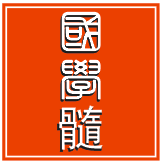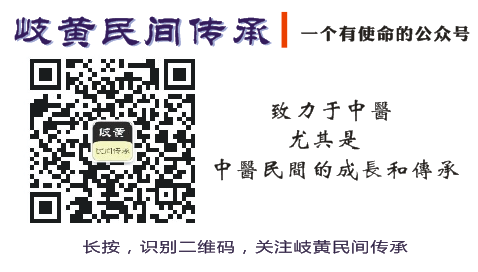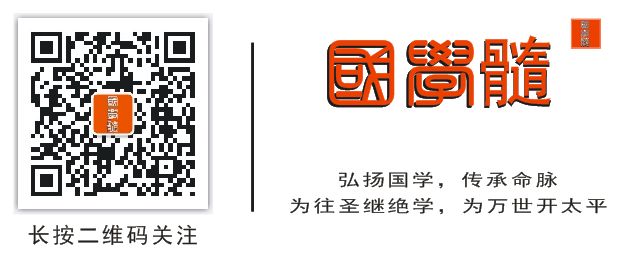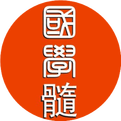
Promoting Traditional Chinese Medicine, Inheriting the Lifeblood
Continuing the teachings of the sages, opening peace for all generations

The Qi and Huang School of Traditional Chinese Medicine holds a crucial and significant position in traditional studies, being an inseparable part of it. Throughout the long river of history, it has condensed the wisdom of the Chinese people, making significant contributions over five thousand years, safeguarding the historical process of various eras, resisting and overcoming disasters, allowing the Chinese nation to thrive to this day. In this long historical flow, a vast amount of medical civilization has accumulated and settled, becoming a brilliant pearl. Sharing the Qi and Huang School of Traditional Chinese Medicine daily aims to inherit and promote it, better benefiting humanity.

Professor Wang Weiliang, through long-term clinical practice, proposed that “to treat the heart, one must unblock stasis,” emphasizing that activating blood and unblocking vessels is the fundamental treatment method for cardiovascular diseases. He summarized the theory of blood stasis as a common cause of many diseases, particularly in the elderly, chronic illnesses, rare diseases, and heart-related issues. Based on syndrome differentiation and treatment, he developed the “Twelve Methods of Activating Blood and Resolving Stasis,” widely applied in the clinical treatment of severe cardiovascular conditions and difficult diseases, enriching the connotation of blood stasis syndrome and the theory of activating blood and resolving stasis. The following is an introduction to these methods for the benefit of colleagues.Five Theories on the Causes and Mechanisms of Blood Stasis1. Many Diseases are Associated with Blood StasisAs stated in the “Suwen: On Regulating the Menstrual Cycle”: “What humans possess are blood and qi.” It also points out: “When blood and qi are not harmonious, various diseases arise.” Building on previous understandings and combining personal practice, Wang Weiliang proposed the academic thought that “many diseases are associated with blood stasis.” This does not mean that all diseases are due to stasis, but rather that many diseases of a certain type or at a particular stage, especially in later stages, often exhibit varying degrees of blood stasis. Clinical practice shows that conditions such as qi deficiency, qi stagnation, qi counterflow, blood deficiency, yang deficiency, yin deficiency, fluid deficiency, cold congealing, heat accumulation, phlegm obstruction, and dampness depression can all lead to the occurrence of blood stasis.2. The Elderly are Prone to Blood StasisWang Weiliang believes that aging and disease lead to a decline in bodily functions in the elderly, resulting in weakened qi and blood, causing blood flow to stagnate and become stasis. Aging is an inevitable process of human life development, and with the emergence and progression of aging, the functions of the organs continuously decline, and the balance of qi and blood diminishes, ultimately leading to “all five organs are deficient, spirit and qi are lost, and the body is left alone” (from “Lingshu: On Longevity”). In this process, the deficiency of kidney qi and the weakness of the spleen and stomach are particularly prominent. Wang Weiliang believes that the elderly are often deficient, leading to stasis. The weakened organ functions in the elderly, along with the deficiency of qi and blood, result in emotional instability, often leading to depression or anxiety. This physiological and psychological characteristic leads Wang Weiliang to conclude that the elderly are often depressed, leading to qi stagnation and blood stasis. The aging of the organs, meridians, skin, muscles, and bones in the elderly often results in multiple chronic diseases or degenerative diseases, which can affect organ function and the normal flow of qi and blood, leading to various blood stasis syndromes. Therefore, Wang Weiliang believes that the elderly often suffer from diseases, leading to stasis.3. Chronic Illnesses are Associated with Blood StasisLong-standing diseases penetrate deep into the meridians, with pathogenic factors obstructing the meridians or “chronic illness must lead to deficiency,” resulting in weakened qi and blood flow, leading to stasis. Wang Weiliang has found in long-term clinical practice that many chronic diseases and those that do not heal easily are often related to blood stasis. Clinically, manifestations of stasis such as stasis pain, stasis heat, stasis bruises, and stasis lumps can be observed, along with pulse characteristics such as rough, knotted, deep, and slow, or accompanied by bleeding and other signs of blood stasis. The appropriate use of blood-activating and stasis-resolving herbs often yields good therapeutic effects.Regarding the modern mechanism of “chronic illness leading to stasis,” Wang Weiliang believes it may be due to the prolonged course of the disease and repeated occurrences, leading to a decline in immune function, slowed blood circulation, and increased blood viscosity, resulting in the internal generation of blood stasis.4. Rare Diseases are Associated with Blood StasisRare diseases refer to uncommon illnesses that lack regular patterns, cannot be clearly diagnosed by modern medical means, and lack effective treatment measures. When conventional methods fail to treat various rare diseases, using methods to activate blood and resolve stasis often yields unexpected results. In his work “Traditional Chinese Medicine for Treating Difficult Diseases with Blood Activation and Stasis Resolution,” Wang Weiliang states: “Blood stasis is the root cause of difficult diseases; the essence of difficult diseases is blood stasis syndrome. Clinically, it can be observed that difficult diseases, regardless of their type or stage, exhibit varying degrees of blood stasis syndrome, which is the most common clinical manifestation of difficult diseases.”5. Heart Diseases are Associated with Blood StasisThe heart governs blood vessels, and factors such as qi deficiency, yang deficiency, blood deficiency, qi stagnation, blood cold, blood heat, or phlegm obstruction can excessively affect the cardiovascular system, leading to heart vessel obstruction. When heart vessels are obstructed, the pathways are not open. The heart houses the spirit, and the vessels nourish the spirit; “when blood vessels are harmonious, the spirit resides.” If heart vessels are obstructed and pathways are not open, the spirit is not nourished, leading to anxiety and fear. On the other hand, pain in the heart vessels can easily cause patients to feel worried, depressed, or anxious, further exacerbating qi stagnation and blood stasis, leading to symptoms such as chest tightness and heart pain. Therefore, patients with heart diseases often exhibit symptoms of palpitations, insomnia, sighing, irritability, and anxiety due to emotional distress leading to stasis.Methods of Activating Blood and Resolving StasisWang Weiliang advocates “using unblocking as a supplement,” adhering to syndrome differentiation and treatment, and combining diagnosis and treatment for cardiovascular diseases. He has achieved significant therapeutic effects in treating difficult severe cases such as post-interventional restenosis, recurrent myocardial infarction, and sick sinus syndrome, creating new ideas for the TCM treatment of cardiovascular diseases. He has summarized the “Twelve Methods of Activating Blood and Resolving Stasis” for treating various cardiovascular diseases, such as using warming yang and activating blood for sick sinus syndrome, benefiting qi, activating blood, and promoting diuresis for heart failure and dilated cardiomyopathy, and regulating qi and activating blood for severe angina, providing theoretical and practical basis for treating cardiovascular diseases from the perspective of blood stasis, promoting the innovative development of TCM theories on qi and blood.1. Benefit Qi and Activate Blood MethodWang Weiliang places great importance on the role of qi and blood in the occurrence and development of diseases. In clinical syndrome differentiation and treatment, he often draws on Wang Qingren’s experience of treating diseases primarily with qi and blood, focusing on identifying and regulating qi and blood, and is adept at using methods to benefit qi and activate blood, frequently employing ginseng, eleutherococcus, astragalus, codonopsis, and prince ginseng in combination with blood-activating and stasis-resolving herbs. His self-formulated qi and blood benefiting prescription includes Coronary Heart Disease No. 4 (raw astragalus, salvia, chuanxiong, notoginseng powder, safflower, red peony) and Coronary Heart Disease No. 5 (yan hu suo, notoginseng powder, raw astragalus, salvia, chuanxiong, safflower, red peony).2. Regulate Qi and Activate Blood MethodQi is the commander of blood, and blood is the mother of qi; when qi flows, blood flows, and when qi stagnates, blood stasis occurs. The method of regulating qi and activating blood fully reflects the physiological and pathological relationship between qi and blood. The combination of qi-regulating herbs and blood-activating herbs makes full use of the relationship between qi and blood; thus, to activate blood, one must also regulate qi. When qi is unblocked, blood is activated. Wang Weiliang uses blood-activating and stasis-resolving herbs in conjunction with qi-regulating herbs, often selecting chuanxiong, yan hu suo, curcuma, sparganium, and cyperus, which possess both qi-regulating and blood-activating properties, achieving a complete unity of qi and blood. His self-formulated qi-regulating and blood-activating prescription includes Coronary Heart Disease No. 3 (salvia, chuanxiong, curcuma, safflower, red peony).3. Clear Heat and Activate Blood MethodWang Weiliang believes that heat evil can exacerbate the occurrence and development of blood stasis, and conversely, blood stasis can also transform into heat over time; the two are mutually causal. In terms of pathogenesis, he emphasizes the coexistence of blood stasis and heat depression; in terms of etiology, blood stasis and turbid toxins interpenetrate; in terms of treatment, he combines blood-activating methods with methods to clear heat, open depression, detoxify, clear heat and dampness, clear the head and eyes, and clear heat and drain fire. Commonly used heat-clearing herbs include coptis, scutellaria, phellodendron, gentian, gardenia, and chrysanthemum. His self-formulated clear heat and activate blood prescription includes San Huang Activating Blood Decoction (coptis, scutellaria, phellodendron, salvia, chuanxiong, curcuma, safflower, red peony).4. Resolve Phlegm and Activate Blood MethodPhlegm and stasis are both yin evils, sharing the same origin and influencing each other; they often coexist. Wang Weiliang believes that dysfunction of the five organs can lead to the internal generation of phlegm and stasis. Phlegm can easily lead to stasis, and stasis can also lead to phlegm, ultimately resulting in symptoms of both phlegm and stasis. Commonly used phlegm-resolving herbs include dried tangerine peel, white atractylodes, platycodon, trichosanthes, and pinellia. His self-formulated phlegm-resolving and blood-activating prescription includes Spleen-Strengthening Phlegm-Resolving and Blood-Activating Decoction (dried tangerine peel, white atractylodes, poria, salvia, chuanxiong, raw astragalus).5. Warm Yang and Activate Blood MethodThe heart qi and heart yang are the driving forces for the normal functioning of the heart and blood. Once the heart’s yang qi is damaged, it is easy to produce pathological products such as phlegm turbidity, water retention, and blood stasis, which can further damage yang qi. Wang Weiliang believes that the warm yang and activate blood method can warm and tonify yang qi, treating the root cause of deficiency, while blood stasis caused by yang deficiency can be improved with blood-activating methods. Commonly used warming yang herbs include red ginseng, galanga, dried ginger, black cardamom, and cinnamon. His self-formulated warm yang and activate blood prescription includes (galanga, cinnamon twig, red peony, curcuma, prince ginseng).6. Promote Water and Activate Blood MethodBody fluids and blood are both derived from the essence of food and water, with body fluids being an important component of blood. When the flow of body fluids and blood is obstructed, or when blood deviates from its normal channels and accumulates in the body, it can lead to blood stasis. Therefore, in pathology, water and stasis often influence each other. Wang Weiliang often refers to both water and stasis in clinical diagnosis and treatment, achieving good therapeutic effects in treating chronic heart failure, heart valve disease, and other conditions. Commonly used diuretic herbs include poria, coix seed, corn silk, plantago, and bitter apricot seed.7. Expel Wind and Activate Blood MethodWind herbs can not only disperse external wind, calm liver wind, and open depression, but also have warming, damp-drying, phlegm-resolving, pain-relieving, and blood-activating properties. Wang Weiliang believes that in the clinical treatment of blood stasis syndrome, wind herbs can directly play a role in unblocking blood vessels and dissipating stasis, or they can be combined with blood-activating and stasis-resolving herbs to assist in eliminating various factors that cause stasis, indirectly promoting smooth blood flow and enhancing the effects of blood activation and stasis resolution. Commonly used wind-expelling herbs include gastrodia, uncaria, kudzu, notopterygium, and saposhnikovia.8. Cool Blood and Activate Blood MethodThe cool blood and activate blood method combines herbs that have both heat-clearing and blood-activating properties to treat the “syndrome of blood heat and blood stasis” caused by the mutual influence of heat and stasis. Wang Weiliang believes that in the syndrome of blood heat and blood stasis, heat and stasis mutually affect each other, causing blockage; both are pathogenic factors and pathological products. Clinically, it is necessary to pay attention to both cooling blood and activating blood. Commonly used cooling blood herbs include peony root, white atractylodes, silver barberry, sweet wormwood, and white grass root.9. Softening Hardness and Activating Blood MethodWang Weiliang applies the softening hardness and activating blood method for stubborn blood stasis, often seen in chronic blood stasis. This method has achieved good results in treating stubborn diseases and difficult diseases in the cardiovascular system and other systems. Softening hardness and activating blood differs from simple blood activation; it often uses blood-breaking herbs. For patients with significant blood stasis and severe obstruction of heart vessels, it is necessary to strengthen the power of blood activation and stasis resolution, often combining herbs like sparganium and curcuma with turtle shell and self-heal to soften hardness, disperse masses, and break blood stasis.10. Unblock and Activate Blood MethodThe broad unblock method includes cold, warm, moistening, and supplementing methods, all of which can be used in conjunction with blood-activating and stasis-resolving methods. For elderly patients, Wang Weiliang often combines moistening methods with blood-activating and stasis-resolving methods, widely applied in treating internal injuries and external diseases. For elderly patients with constipation, he often adds herbs like hemp seed, biota seed, cassia seed, raw rehmannia, and angelica.11. Nourish Yin and Activate Blood MethodYin fluids are an important component of blood; when body fluids are abundant, blood can flow normally. Conversely, insufficient body fluids lead to poor blood flow and easy formation of blood stasis. Wang Weiliang believes that elderly individuals, due to declining organ function, experience imbalances in yin, yang, qi, and blood, leading to insufficient body fluids and poor blood flow. Therefore, for the elderly or those with yin deficiency, he often adds herbs like adenophora, polygonatum, scrophularia, ophiopogon, schisandra, and yam.12. Nourish Blood and Activate Blood MethodBlood deficiency and blood stasis are closely related; blood deficiency leads to dry and rough vessels, poor blood flow, or blood that deviates from its normal channels becomes stasis. Stasis obstructs the vessels, leading to insufficient nourishment of the organs, which can also cause or worsen blood stasis. Wang Weiliang believes that if blood stasis is not resolved, new blood cannot be generated; thus, treatment must consider both nourishing blood and activating blood, ensuring that nourishing blood does not cause dampness and that activating blood does not harm the upright qi. Commonly used blood-nourishing herbs include salvia, angelica, white peony, cooked rehmannia, donkey-hide gelatin, and jujube.Follow the Traditional Studies WeChat public account for more content.
| I Copyright Statement:○This content is sourced from the China Traditional Chinese Medicine News, selected from the “China Traditional Chinese Medicine News” August 18, 2022, Fourth Edition, by Li Qiuyan, Xiyuan Hospital, China Academy of Chinese Medical Sciences.○ Copyright belongs to the relevant rights holders. If there is any improper use, please contact us for immediate deletion.I Submission Email:[email protected] Follow the Traditional Studies WeChat public account for more content.I Warning:All articles published on this platform are for the purpose of popularizing TCM knowledge and are only for reference and learning by professional TCM practitioners. They do not constitute any prescription, advice, recommendation, or guidance. Please do not blindly try medications; this platform does not bear any responsibility for any consequences arising from this. If needed, please use under the guidance of a physician. All articles published on this platform only represent the author’s views. |
Recommended Reading【Traditional Studies】Selected Excellent Articles from the Public Account:① Traditional Chinese Painting: Teaching You to Paint Impressionistic “Cockscomb Flower and Beetle” with Every Stroke② From Reproductive Love to Immortal Relationships, the Mysteries of Bedroom Techniques—Exploring the Meaning of “Fengshen Yanyi” (Part 2)③ Blessing Techniques: The Secret of Soul Retrieval【Knowledge and Learning】Selected Excellent Articles from the Public Account:① The Qin Dynasty had the “Four Great Legions” to unify China; what was the final destination of the legion that swept through the six directions?② This woman had “the talent of Lü Bu but none of his evil”; she ruled from behind a curtain, leading a legendary life.③ Chiang Kai-shek’s slap created an image of a “just judge”; but why did he not dare to strike?【Qi and Huang Folk Inheritance】Selected Excellent Articles from the Public Account:① The miraculous folk method of transferring sores and tumors from important areas to less significant ones—clinical applications of the method of transferring sores and diseases.② Difficulty falling asleep, dreaming too much, shallow sleep, waking easily, and insomnia—Professor Xu Hao’s experience in diagnosing and treating insomnia.③ The Lin family’s century-old experience in treating bones: Lin Rugaos’ treatment of 188 cases of fractures with bone-repairing pills.④ Irregular sexual life leading to premature ejaculation—Professor Li Yaqing’s clinical experience in treating male diseases combined with anxiety and depression.⑤ Introducing an ancient secret formula—Da Cheng Dan Formula.⑥ Phlegm-dissolving and mass-dispersing formula for treating gastric cancer, intestinal cancer, esophageal cancer, and other digestive tract tumors and other malignant tumors.⑦ Self-formulated Zhenxiong Decoction for treating 76 cases of impotence, balancing yin and yang, addressing both deficiency and excess, and achieving a wonderful remedy.⑧ Yijing Decoction for treating infertility, impotence, premature ejaculation, lumbar and knee soreness, fatigue, and weakness—Professor Wang Jinsong’s clinical insights.For more excellent content, please check the historical articles.



